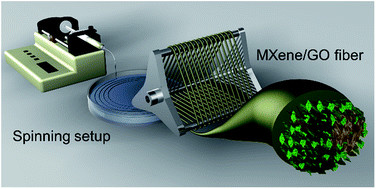Is that an energy-storing fibre in your pocket?

Deakin University scientists have been working for three years to process energy-storing sheets of ‘MXene’ — a nanoscopic material made of carbon and titanium — into knittable fibres. The goal of their research? To create clothing fibres that can store energy.
Working at a scale about 50,000 times thinner than a human hair, the team from Deakin’s Institute for Frontier Materials (IFM) combined sheets of MXene with a small amount of ‘spinnable’ graphene, resulting in a fibre thread that stored charges between microscopic layers with “amazing energy properties”, according to lead researcher Dr Shayan Seyedin. The results were published in the Journal of Materials Chemistry A.
“This work is a huge achievement, and the potential impact of this breakthrough is enormous, as it can result in wearable energy storing textiles,” Dr Seyedin said. “You can have energy with you all the time.”
MXene is typically not spinnable directly, due to being made out of small sheets rather than interlocking polymers, but Dr Seyedin worked to integrate MXene with graphene sheets, which wrinkled together into a strand of high-tech fibre. He noted, “There are only a few groups in the world that can even synthesise MXene, and we spent years doing just that before we could look toward this new field of wearable, flexible power sources.
“The next stage will be transforming the small fibres into actual wearable articles of clothing — whether that’s pants pockets, wristbands or shirt patches that are capable of storing energy and charging devices.”
Dr Seyedin said MXene fibres could thus offer a wearable alternative to bulky batteries and portable chargers, claiming, “These results show that MXene is an excellent candidate for the development of fibre-shaped devices that potentially include supercapacitors, sensors, batteries and other integrated fibre devices, all of which are becoming critical in meeting the demands of wearable and miniaturised electronics.
“What we are working toward now is an even more flexible option that can also be washed and produced at a large enough scale to cover areas such as the inner lining of a pants pocket.”
Light-based chip boosts AI power efficiency
Researchers have developed an optoelectronic silicon chip to perform convolution operations for...
Shining a UV light on next-gen computer chips
A recent study could help scientists and engineers build faster, cheaper and more eco-friendly...
Predicting spin accumulation for faster, greener memory
Researchers have developed a computational tool to predict the spin accumulation coefficient in...






